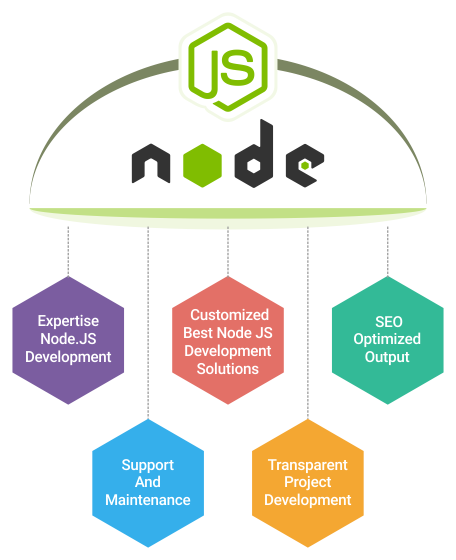Blitz News Digest
Stay updated with the latest trends and insights.
Node.js: The Unexpected Hero of Modern Web Development
Discover how Node.js is revolutionizing web development and why it's the game-changing hero you didn't know you needed!
How Node.js Revolutionizes Real-Time Web Applications
Node.js has fundamentally changed the landscape of real-time web applications by providing an efficient, event-driven architecture that enhances performance and scalability. Its non-blocking I/O model allows developers to handle multiple connections simultaneously, leading to faster data processing and reduced response times. This means that applications like chat services, live notifications, and collaborative tools can operate seamlessly, allowing users to interact with the application in real time. With Node.js, developers can use a single programming language, JavaScript, for both the client and server sides, streamlining development and reducing context switching.
Furthermore, the npm (Node Package Manager) ecosystem enables developers to easily share and reuse code, accelerating the development process. Tools like Socket.io provide the necessary libraries for real-time communication, making it easier to implement features such as push notifications and live updates. As a result, businesses can leverage these capabilities to improve user engagement and offer more dynamic online experiences. In summary, Node.js not only enhances the performance of real-time web applications but also fosters a collaborative development environment that drives innovation.

Understanding the Role of Node.js in Microservices Architecture
Node.js has emerged as a popular choice for building microservices architecture due to its lightweight and efficient nature. By enabling developers to create scalable and high-performance applications using JavaScript, Node.js fits perfectly into modern development practices. Its non-blocking I/O model allows for handling multiple concurrent requests, making it ideal for microservices that need to operate independently and interact over the network. With a vast ecosystem of libraries and frameworks, such as Express.js, developers can rapidly build and deploy individual services while maintaining a uniform codebase.
In a microservices architecture, each service is designed to be independent, which necessitates effective communication between them. Node.js facilitates this through its asynchronous capabilities, allowing services to exchange data efficiently. This architecture empowers teams to work on different services simultaneously, promoting faster development and easier scalability. Furthermore, the integration of tools like Docker and Kubernetes with Node.js enhances the deployment process, enabling developers to manage and orchestrate their microservices seamlessly, resulting in a more resilient and flexible application structure.
5 Common Myths About Node.js Debunked
Node.js has gained immense popularity among developers, but with that popularity comes a plethora of myths and misconceptions. One common myth is that Node.js is only suitable for small applications. In reality, Node.js is highly scalable and is used by major corporations like Netflix and Walmart for their large-scale applications. It handles thousands of concurrent connections efficiently, making it a robust choice for both small startups and enterprise-level projects.
Another prevalent myth is that Node.js is purely a front-end technology. This is misleading; while Node.js is widely used on the client side for asynchronous JavaScript calls, it is also a powerful server-side runtime. Many developers utilize Node.js to build back-end frameworks, API services, and handle server-side logic. This versatility positions Node.js as an all-encompassing environment that enables full-stack development without the need for additional languages.